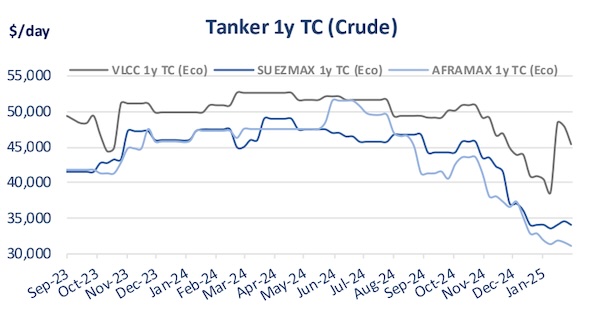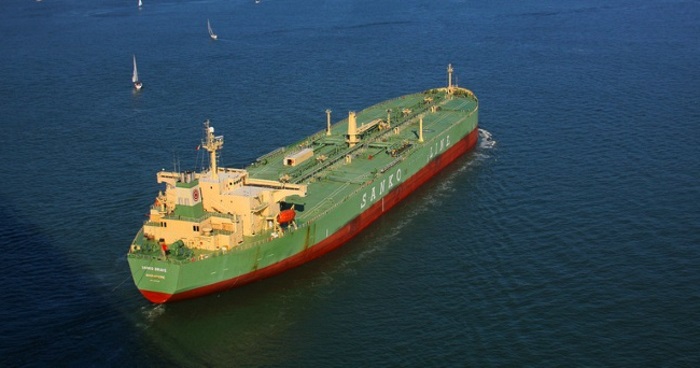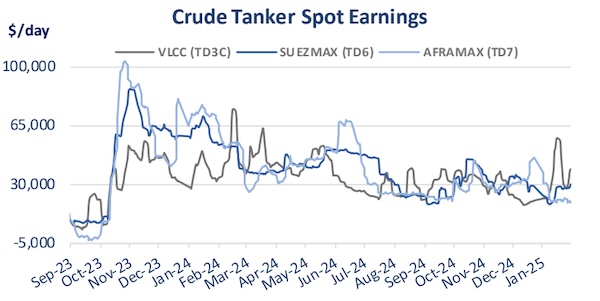Shipping: Commodity Market Turbulence | Hellenic Shipping News Worldwide

Commodity markets have been mired with uncertainties at the beginning of 2025. In its latest weekly report, shipbroker Xclusiv said that “the start of 2025 has seen significant turbulence across the global commodity markets, driven by shifting trade policies, supply constraints, and geopolitical maneuvering. China’s iron ore and seaborne coal imports have started the year on a weak note, with January arrivals dropping to multi-month lows. However, the two commodities are experiencing diverging price trends—while iron ore remains stable, thermal coal has fallen to its lowest level in nearly four years. Iron ore imports are expected to reach 99.5 million metric tonnes in January 2025, down from 112.5 million tons in December 2024, though part of the decline may be due to the Lunar New Year holiday pushing shipments into February 2025”.

Source: Xclusiv
“Meanwhile, seaborne coal imports have plunged by 26% from December 2024 levels, marking a sharper drop than in previous years. The decline reflects both seasonal trends and rising domestic production, which reached 439 million tons in December, up 4.2% year-over-year. The surplus has led to weaker Chinese coal prices, dragging down prices for Indonesian and Australian coal. In contrast, iron ore prices have remained resilient, supported by optimism over Beijing’s stimulus measures and their potential impact on steel demand. While China’s coal imports face increasing pressure from rising domestic supply, iron ore continues to benefit from global market sentiment and expectations of economic stabilization”, Xclusiv said.

The shipbroker added that “meanwhile, Iranian oil sellers have demonstrated remarkable adaptability in the face of U.S. sanctions, shifting their offloading operations from Shandong province to ports in southern and eastern China. The Shandong Port Group, which operates major terminals in Qingdao, Rizhao, Yantai, and Dongying, continues to enforce a ban on U.S.-sanctioned tankers. In response, traders have rerouted shipments to Huizhou and Zhejiang province, where storage tanks have reportedly been fully rented in anticipation of further deliveries. This workaround involves transferring Iranian crude via non-sanctioned vessels to reach Shandong buyers, increasing costs that must either be absorbed by sellers or passed on to refiners. As of late January multiple tankers have redirected to these alternative ports. Despite these efforts, Iranian crude arrivals in China are expected to decline by 277,000 barrels per day to 1.1 million barrels per day in January due to logistical constraints. Floating storage of Iranian crude has surged to a 27-week high of 20.68 million barrels, with over 70% anchored in Malaysian and Singaporean waters. Additionally, Iranian sellers are mobilizing tankers to transport stranded oil from Dalian, where at vessels appear to be engaged in shifting Iranian crude further south. While the Biden administration has yet to impose stricter sanctions, Iran is taking advantage of this window to reorganize its fleet, offering a valuable precedent for Russian oil traders facing similar restrictions”.

Source: Xclusiv
Xclusiv also mentioned that “adding to market uncertainty, U.S. oil trade policy remains in the spotlight as Trump administration has announced 25% tariffs on Canadian and Mexican imports, 10% tariff on Canadian energy sources and 10% tariff on imports from China. At the same time, U.S. crude stockpiles have surged by 3.5 million barrels, surpassing expectations, due in part to refiners cutting production amid severe winter storms. On the supply side, U.S. sanctions on Russian oil are beginning to bite, with crude exports from Russia’s western ports expected to decline by 8% in February”, the shipbroker concluded.
Nikos Roussanoglou, Hellenic Shipping News Worldwide




